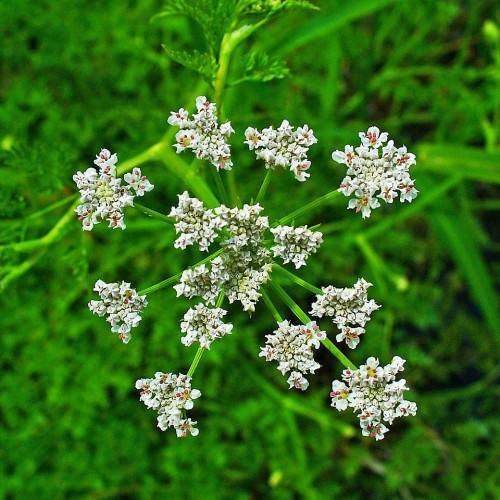
fine-leaved water dropwort
Oenanthe aquatica
Cycle:
Herbaceous Perennial
Watering:
Frequent
Hardiness Zone:
5 - 8
Flowers:
Flowers
Sun:
Full sun
Leaf:
Yes
Growth Rate:
Low
Maintenance:
Low
Poisonous To Humans:
Yes
Poisonous To Pets:
Yes
Salt Tolerant:
Yes
watering
Fine-leaved water dropwort (Oenanthe aquatica) should be watered regularly, approximately twice a week. When watering, thoroughly saturate the soil so that water reaches the roots. Allow the excess water to drain away, then wait for the top inch or 2 of soil to become dry before watering again. Additionally, adding a layer of mulch to the soil will help conserve moisture. Fertilizer can be applied a few times per month to provide additional nutrients to the soil. Water sparingly in winter to prevent waterlogging.
sunlight
The fine-leaved water dropwort (Oenanthe aquatica) is a perennial plant species that thrives in moist soils, growing in damp areas such as marshlands, riversides, and lake shores. This species of plant prefers a sunny to partly shaded spot. It requires plenty of sunlight to promote healthy growth and flowering. The ideal amount of light for the fine-leaved water dropwort is at least 6 hours of direct sunlight daily. During the longest days of the year, up to 8 hours of direct sunlight is best. In colder days of winter, the plant should be kept in a bright, sunny, indirect light area to make sure it receives the correct amount of light. When growing fine-leaved water dropwort indoors, make sure to provide it with bright, indirect light for a minimum of 8 hours daily.
pruning
Fine-leaved water dropwort (Oenanthe aquatica) should typically be pruned once a year in late winter or early spring before its new growth begins. To ensure the healthiest possible growth, it should be selectively cut back to maintain a neat, compact form and remove any dead, dying, or diseased foliage. Pruning should also be done to open up dense foliage for better air circulation. When pruning, be sure to use sharp, clean pruning shears. Avoid pruning more than 1-third of the plant, as this can lead to plant stress. Additionally, prune only as much as necessary while avoiding over-pruning, which can result in thin growth. Once complete, pruned foliage should be immediately disposed of to avoid possible disease and pest spread.
